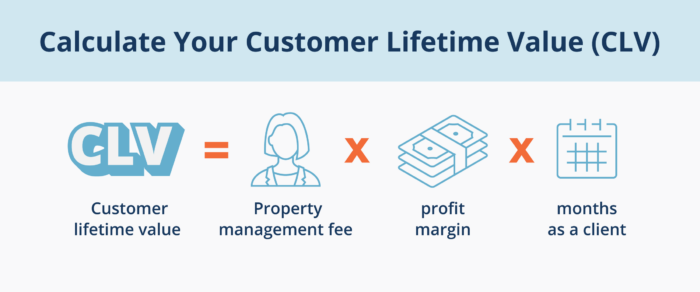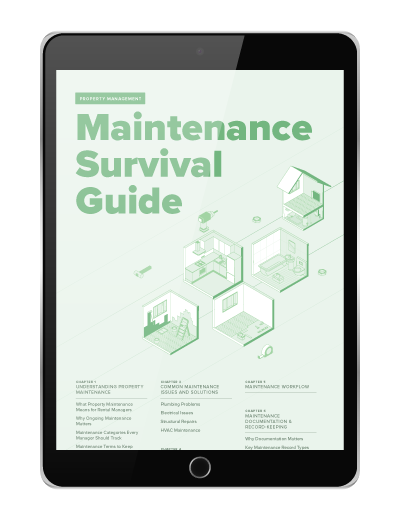The Science of Growing Your Portfolio
Learn the steps to get your property management company's portfolio growth down to a science.
Get the GuideYou know that to get more property management clients, you need to generate more property management leads. And to do that, you need a solid, multi-channel marketing plan that brings in owners looking for a property manager.
But how do you get more property management clients out of the leads that come in?
Your next step in your property management lead generation and conversion game is to nurture those leads. After all, not every lead that comes in is ready to sign a contract. It takes time and effort to get property owners to convert to clients.
To do that, you’ll need some patience, some great marketing tools, and a solid sales process to help you close.
This is the second post on how to generate property management leads that convert. We started with lead generation, or the process of attracting new owners who are looking for a property management company. Now, we’ll talk about lead nurturing and provide some strategies to deepen interest from property owners and turn them into clients fast.
Property Management Lead Nurturing and the Marketing Funnel
When we talk about lead nurturing, we’re talking about your sales process. Once you get new property owners interested in your business, lead nurturing strategies help you keep them interested in, and eventually sell them on, your services.
In the first post, we explained the marketing funnel, a tool to help you organize your property management leads into categories and implement the right strategies at the right time.
Let’s review.
Top of the Funnel: This is your lead generation, or acquisition stage, where you make new property owners aware of your business.
Middle of the Funnel: Also called the consideration stage, this part of the funnel is where potential clients are evaluating your services and comparing them to others.
Bottom of the Funnel: This is the conversion stage, where leads become clients.
Managing Leads
Lead nurturing takes up time and resources small businesses just don’t have, so focus on those that are the most likely to convert to clients.
Customer Lifetime Value vs. Cost of Acquisition
To do that, calculate the lifetime value of your leads and then measure that against the cost of acquiring each lead. The customer lifetime value (CLV) gives you an estimate of how much revenue each client is expected to generate over the lifetime of their partnership with you.
To calculate your CLV, multiply your property management fee by the expected profit margin and by the number of months you expect the client to stick around. In other words:

To illustrate this, let’s take a simple example.
You come across a lead looking for a property management company to manage a duplex for 2 years. Your management fees would come to $100 per month. Your average profit margin is 20%.
So:

If it costs more than $40 to acquire and convert a lead, then this one is probably not worth pursuing.
Lead Management
Setting up a lead management plan before you start the nurturing process can help you lower the costs of acquisition, however.
When a lead comes in, the first thing to do is to enter it into your customer relationship management (CRM) software, which helps you keep track of every relationship and interaction you have with prospects and customers. Your CRM can be a simple Excel spreadsheet (if you dare) or a more complex tool such as Salesforce or HubSpot.
The important thing is to get all of a lead’s information into one spot as soon as possible. That should include contact information, the date the lead was generated, how the lead got in contact with you, and any other relevant information you may have—like the number of properties an owner has and the kinds of services they would need you to manage (groundskeeping, pool maintenance, etc.). Make sure you keep track of how frequently you’ve tried to contact them and when, and through which channel.
You’ll also want to create different stages for the leads that come in, which will help you manage the process and quantify your success. Below are some you might want to consider implementing:
- Prospecting: In this first phase, qualify a lead by making sure that they are actually a property owner that you would be able to help with your services, and that their CLV is high enough. If you can’t check either of those boxes, you can move them to a closed-unqualified category. If they are, you can move them through the phases listed below.
- Discovery: At the discovery phase, you’re making that initial contact with the property owners you’ve qualified, making them aware of your services and how they can benefit.
- Consult: In the third phrase, you are actually meeting with property owners to better understand their needs and offer solutions. You begin to talk about pricing.
- Negotiation: The negotiation phase is exactly what it sounds like; you are going back and forth about pricing and services until you come to a mutual agreement.
- Closing: The closing phase occurs when you have reached a verbal agreement with, perhaps, a few small issues left to work out.
- Closed-won or Closed-lost: Whether you bring on a new property manager or not, you should mark them as closed. The property managers who sign with you are marked closed-won. The property managers who pass on your services, you mark as closed-lost.
Pro Tip: Noting a reason why they passed on your services could help you win them in the future. If, for example, they go with another property management company because you don’t provide a 24-hour maintenance contact center, you can check in with them again if you bring one on down the road.
It’s important to be very disciplined about managing your leads. All of this information helps you keep track of who has been contacted when, and what part of the sales process they’re in.
It also allows you to look back on your process to determine what’s working and what isn’t. Are leads that come through a service such as All Property Management (a Buildium company), which matches owners with property managers in their area, converting more frequently than those that come through Google paid search? How many emails do you send before you hear back from a prospective client?
Thorough analysis can help you tighten your process and focus on the more promising leads.
Lead Nurturing Tools
Once you have your management plan in place, it’s time to start nurturing. There are several methods you can use to reach out to property management leads and pull them further down the marketing funnel. Here are some of the most common.
Despite frequent rumors to the contrary, email is an extremely effective way to pull in customers—even more effective than social media. According to OptinMonster, 60 percent of consumers prefer to be contacted by email.
If done right, emails can engage potential clients directly with customized messages and information.
Pro Tip: Make sure your emails are mobile-friendly. According to the same report, more and more emails are opened via mobile devices.
Phone Calls
Follow up with a phone call immediately after a lead makes contact (more on this later). But don’t just pick up the phone and start talking. Hubspot recommends doing some research on your lead to get some background on who they are and what kinds of properties they own.
Social Media
Engage with prospective clients through their social media. That’s not to say you should message them directly or leave messages on their business page every week. Instead, keep your own social presence strong and use it to like and share posts on LinkedIn, Facebook or Instagram.
While you may not be speaking with them directly, you’re keeping yourself top-of-mind.
Direct Mail
You can use direct mail to keep your name in the minds of property management leads, as well. Brochures, postcards, and even holiday cards are great ways to remind leads of your services.
Content Marketing
Not all lead nurturing is about direct contact. It’s also about putting out the right information to keep prospective leads interested.
Content marketing can help you position yourself as a leader in your field by showcasing your achievements and your expertise.
At this stage in the marketing funnel, you’re not really going to use blog posts. That’s more of an awareness tool. Instead, you create white papers on property management topics that showcase your expertise, or case studies on improvements your company made in other clients’ properties or processes.
Content that focuses on the value you provide to clients can keep your leads interested. Even content curation (or sharing other people’s content) can be a huge part of this—since you won’t always have the budget or time to put out something original. Even if it’s not your own, you can still cultivate your relationship with your audience by sharing relevant, current stories and your spin on them.
The Most Effective Property Management Lead Nurturing Strategies
As you’ve seen above, a sound lead nurturing strategy is multi-channeled, focusing on those tactics that make the most sense for your business and budget. Now that you have the stages of nurturing a lead and the tools in mind, it’s time to put it all into practice with a detailed follow-up plan that will help you close the sale.
Start by contacting every lead that comes in with a quick email or phone call—or both. Then, create a plan using the following tips.
Contact Quickly
When a prospective lead fills out a contact form on your website or leaves you a business card at an event, it’s important to follow up with them as quickly as possible. According to All Property Management, reaching out to a new lead less than one minute after they initially contact you increases conversion by 391 percent. Conversion drops to 160 percent at two minutes. If you make contact within 24 hours, that conversion opportunity drops to 17 percent.
Even if you can’t make contact that quickly, or if it doesn’t make sense to do so, following up with leads as soon as you can increases your chances of signing on that new property.
Contact Frequently
Contacting a prospective client frequently may seem pushy, but it actually increases the likelihood your lead will become a client. In fact, the likelihood that a lead will convert jumps every time you contact them.
By the sixth call attempt, according to All Property Management, 93 percent of converted leads are finally contacted. So, don’t think you’re being a pest, and don’t give up too quickly!
Contact in a Variety of Ways
From vendors to residents to junk mail, rental property owners get a lot of emails. It’s easy to get lost in their inbox. That’s why it’s important to reach out in a variety of ways.
Call them or drop a postcard in the mail. Follow them on social media and like or share their posts.
Personalize Your Outreach
We’ve all gotten the emails with the generic greeting and the templated message. It’s not memorable and generally not worth our time.
Property managers are busy people, so you need to make the most of your contact attempts.
Personalized emails, for example, generate more conversions and keep clients loyal to you than generic emails. Start by addressing property managers by their name. Instead of writing something generic like “thanks for your interest,” include something more personalized that reminds them who you are and how you got in touch.
There are tools that can automate the email process to keep you from having to spend half your day maintaining your inbox. Zoho or Convertkit, for example, automatically send personalized emails that are triggered when a lead takes a certain action, like filling out an online form.
You can also use generative AI software such as ChatGPT or CoPilot to help you manage emails. For tips on how to use AI in property management, check out: AI for Property Management: 5 Time-Saving Prompts.
Or, if you’re looking for a good old fashioned email template, check out Property Management Email Templates for Your Brand.
If you’re planning a direct mail campaign to prospective leads, include quick notes with your brochure or postcard.
Pro tip: Since this kind of direct mail strategy can be time-consuming and expensive, use it only for very targeted campaigns, where you know the return on investment will be high.
Make Contact Meaningful
When you do get a phone or in-person session with a prospective client/property owner, don’t just throw your sales pitch at them. Ask questions. Listen to their needs and address their concerns.
Allow them to ask questions of you and answer them genuinely. Don’t talk at them with rehearsed responses.
When your marketing efforts yield a lot of property management leads, it’s a great feeling. But there’s still work to do to turn those leads into clients. Implement a solid lead nurturing plan and be persistent to pull those leads further down the marketing funnel—and into your roster of longtime customers.
For more learnings on lead gen strategies to get more doors, check out the first post in this series :Amp Up Your Lead Gen Game: How to Get New Owners in the Door.
Read more on Growth

